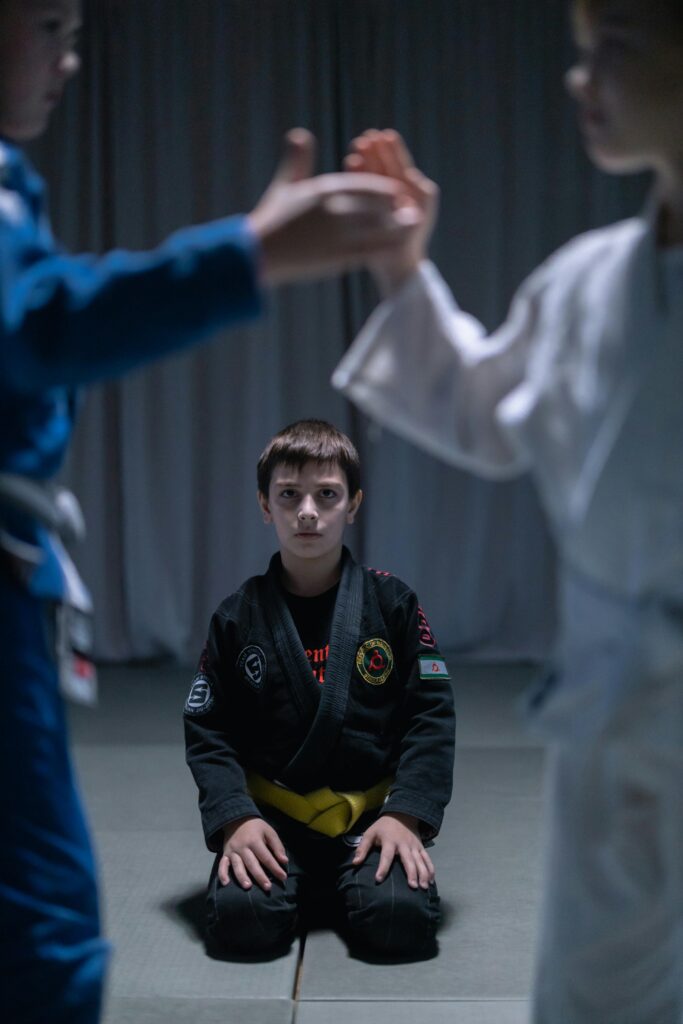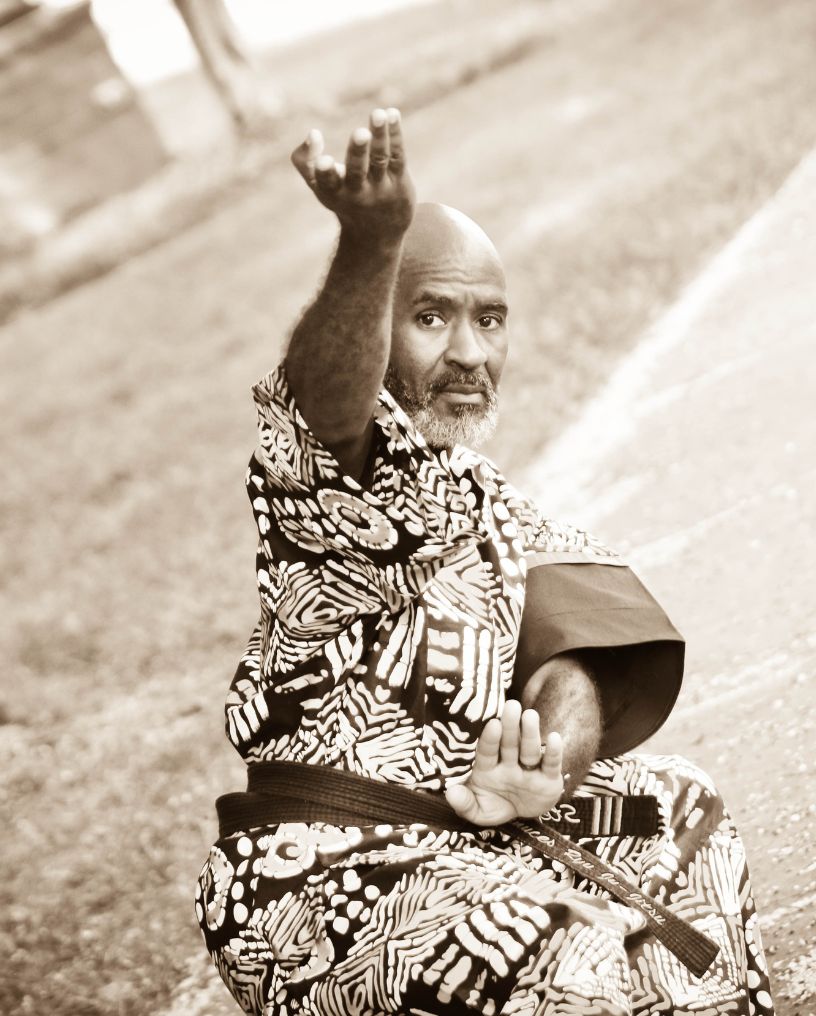No one expects to find themselves in a dangerous situation, but preparation is key to staying safe. Learning how to defend yourself from getting mugged starts with awareness, smart decision-making, and a few essential skills.
Whether you’re walking home, parking your car, or out running errands, these practical strategies can help you avoid trouble and respond effectively if necessary.
Recognizing the Early Signs of Danger
Spotting trouble before it escalates is one of the most effective ways to protect yourself. The earlier you identify a potential threat, the more options you have to respond and remove yourself from the situation safely.
The Importance of Situational Awareness
Staying aware of your surroundings is critical to avoiding dangerous situations. It’s not just about looking around—it’s about being deliberate and observant.
Notice exits, watch how people around you behave, and pay attention to unusual changes in your environment.
For example, if a once-crowded area suddenly becomes quiet or someone is standing too close for comfort, these could be signs to stay alert. Awareness keeps you proactive rather than reactive.
Common Red Flags in Public Spaces
Certain behaviors can serve as red flags for potential threats.
For instance, someone watching you for an extended period, following you at a distance, or lingering in areas where they don’t seem to belong might be cause for concern.
If someone appears overly anxious, fidgety, or out of place, don’t ignore these signs. Trusting your instincts and creating space between yourself and suspicious individuals can reduce risk significantly.
Assessing the Environment
Whether you’re in a parking lot, a park, or a quiet street, always evaluate your surroundings. Is there enough lighting? Are there people nearby who could assist you if needed? Are there any objects or structures where someone could hide?
A quick assessment helps you plan your movements, ensuring you stay in visible, safe areas. If a place feels too isolated, find a route with more activity or visibility.
Trusting Your Instincts
Your instincts are often your first line of defense. If something doesn’t feel right, take it seriously. Sometimes your gut picks up on details your conscious mind might overlook—like subtle movements or body language.
If a situation feels off, leave immediately and head to a safer location, even if you can’t pinpoint exactly why. It’s better to err on the side of caution.
How to Avoid Being Targeted
Criminals often look for easy prey, and by taking simple steps, you can reduce your chances of being targeted. It’s about sending a clear message that you’re aware and prepared.
Projecting Confidence and Awareness
Your posture and demeanor speak volumes. Stand tall, walk with purpose, and stay attentive to your surroundings.
Avoid slouching, looking down, or appearing distracted. Confidence signals that you’re not an easy target, and criminals are more likely to move on to someone who seems less aware or assertive.
Managing Your Belongings
How you carry your belongings can make a big difference. Keep your bag or purse close to your body, ideally across your chest or under your arm.
Avoid holding your phone or wallet in your hand, especially in crowded areas where it’s easy for someone to snatch them. The less accessible your items are, the less attractive you’ll be to a potential thief.
Understanding Criminal Behavior
Muggers typically seek individuals who are preoccupied or unaware. Using headphones, staring at your phone, or appearing lost can make you an easier target.
Stay alert by keeping your head up and scanning your environment regularly. By being present and mindful, you reduce the likelihood of being singled out.
Dressing Smartly
What you wear can also impact your safety. Comfortable shoes allow you to move quickly if needed, while avoiding flashy jewelry or expensive-looking accessories helps you stay inconspicuous.
Choose practicality over style when it comes to your safety—it’s a small adjustment that can make a big difference.
Safety Strategies in Common Settings
Different environments present unique challenges, but with the right precautions, you can navigate them safely.
Urban Environments
City streets are often bustling with activity, but they can also hide risks. Pickpockets and opportunistic criminals thrive in crowded areas, so keep your belongings secure and your bag zipped.
When walking through busy spaces, avoid unnecessary physical contact with others and stay aware of your immediate surroundings. If someone is acting unusually close or persistent, step aside and change your path.
Residential Areas
Even in familiar neighborhoods, safety shouldn’t be taken for granted. Always lock your doors, whether you’re at home or in your car. Be mindful of unfamiliar vehicles or individuals hanging around your area.
Avoid taking shortcuts through alleys or poorly lit paths, even if they save time. It’s worth a few extra minutes to prioritize safety.
Nighttime Precautions
Darkness can make even well-known areas feel unsafe. Stick to paths that are well-lit and populated whenever possible.
If you’re walking to your car, have your keys ready in your hand—not only for convenience but as a potential tool if you need to defend yourself.
Stay alert and keep your focus on getting to your destination rather than being distracted by your phone or other devices.
Rideshare and Online Interactions
When using rideshare services, always double-check the driver’s name and license plate before getting in. Sit in the back seat so you have more control over the situation and can exit quickly if needed.
If you’re meeting someone from an online platform, always choose a public location and inform someone you trust about your plans. Small precautions like these can prevent big problems.
Immediate Actions to Take During a Mugging
If you ever find yourself in the unfortunate position of facing a mugger, staying calm is your most powerful tool. Reacting with panic can escalate the situation, but a focused response can protect you and give you the best chance of getting out safely.
By preparing in advance, you’ll know how to handle this moment with confidence.
Assessing the Threat
Take a quick but careful moment to gauge what’s happening. Is the mugger armed, or do they seem to rely on intimidation alone? Are they simply after your wallet, or does their behavior indicate something more aggressive?
These observations help you decide your next move. For instance, a mugger holding a weapon will often focus on gaining your compliance, while one without a weapon may hesitate or use a less confident approach.
Understanding their intent allows you to respond smartly rather than impulsively.
De-escalation Techniques
If the mugger demands your belongings, your safest option is to comply. Toss your wallet, bag, or other items to the ground several feet away.
This not only draws their attention away from you but also creates a brief opening for you to step back and prepare to move away. Keep your voice calm and steady—avoid shouting or sudden movements that might agitate them further.
The goal is to diffuse their aggression, lower the tension, and get yourself out of harm’s way.
When and How to Comply
Handing over your belongings can feel difficult, but it’s important to remember that material items are replaceable while your safety is not.
If you sense that giving them what they want won’t end the situation, start thinking about your escape options. Always prioritize your well-being over confrontation.
Be aware of your surroundings—where could you run to safety? If compliance doesn’t work, look for opportunities to create distance and regain control.
Escaping and Alerting Authorities
As soon as you’re in a safe location, contact authorities. Provide clear details about the mugger’s appearance, clothing, and direction of escape.
Every detail helps law enforcement track them down. Stay aware of your surroundings as you move away, and avoid the area if possible until help arrives.
Once you’re safe, taking these steps will not only assist the authorities but also help you begin to process what happened.
Practical Self-Defense Basics for Everyone
Avoiding dangerous situations is always preferable, but there are times when knowing how to physically defend yourself can make all the difference. With just a few basic techniques and the right mindset, you can empower yourself to act decisively if needed.
Core Moves Everyone Should Know
Start with simple yet effective techniques that focus on escaping and disabling an attacker. For example, twisting your wrist sharply against the attacker’s thumb can free you from a tight grip.
If the situation requires a quick strike, aim for vulnerable areas like the eyes, nose, throat, or knees. These areas are particularly sensitive and can briefly incapacitate the attacker, giving you precious seconds to escape.
Practice these moves until they feel natural so you can rely on them when it matters most.
Using Everyday Items as Tools
Objects you carry every day can serve as improvised tools for self-defense. Your keys can be held between your fingers to deliver a striking blow, while a pen or metal water bottle can be used to jab or block.
Even a sturdy bag can act as a shield or distraction. These tools work best when you’ve thought about how to use them in advance. Spend a little time practicing with these items to make sure you’re ready to use them effectively if needed.
The Value of Self-Defense Classes
Taking a self-defense class is one of the best ways to build both skills and confidence. A good class will teach techniques that are practical and easy to remember under stress.
Even a few sessions can give you a solid foundation, helping you react faster and more effectively in a threatening situation.
Classes also provide a supportive environment to practice and improve, making them a valuable investment in your personal safety.
Building a Self-Defense Mindset
Your mindset is just as important as physical preparation. Staying calm and thinking strategically can help you make the right decisions in high-pressure situations.
Visualize yourself responding confidently to threats, and remind yourself that you have the ability to protect yourself. Trusting your instincts and focusing on your options, rather than freezing or panicking, can give you a critical edge in any confrontation.
Turn Awareness Into Action with Eye2Eye Combat
Staying safe is about more than luck—it’s about making smart choices and being prepared for whatever life throws your way.
By practicing awareness, learning how to avoid danger, and mastering simple self-defense techniques, you can confidently navigate any situation.
At Eye2Eye Combat, our Bujutsu classes offer more than just physical skills—they build mental resilience, strategy, and a sense of empowerment.
Ready to take charge of your safety? Explore our classes and experience training that transforms the way you move through the world. Your confidence starts here.
FAQs
How do you prevent yourself from being robbed?
Stay alert and aware of your surroundings. Walk with confidence, avoid distractions like your phone, and keep your belongings secure and out of sight. Stick to well-lit areas and trust your instincts—if something feels off, take precautions like changing your route or seeking a safer space. Small changes in behavior can make a big difference.
What do muggers look for in a victim?
Muggers often target people who appear distracted, unaware, or vulnerable. They look for individuals who are isolated or seem like they wouldn’t resist. Appearing confident and alert can make you less appealing. Avoid flashing valuables like phones, wallets, or jewelry, and stay focused on your environment to deter unwanted attention.
Where is the most likely place to get mugged?
Muggings often happen in isolated or poorly lit areas, such as alleys, parking lots, or deserted streets. Public transportation hubs and crowded spaces can also be risky, as muggers can blend in with the crowd. Stay aware, avoid shortcuts through secluded areas, and choose safe, well-lit routes whenever possible.
What attracts muggers?
Muggers are drawn to easy opportunities, like someone visibly carrying valuables or appearing distracted. Flashing expensive items, using your phone in an unfamiliar area, or being alone in a quiet place can make you a target. Staying aware, keeping your belongings secure, and projecting confidence can reduce the likelihood of being approached.





